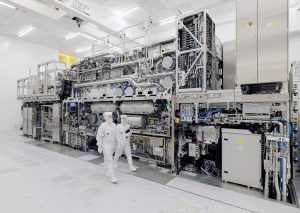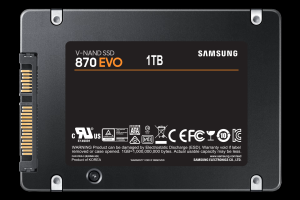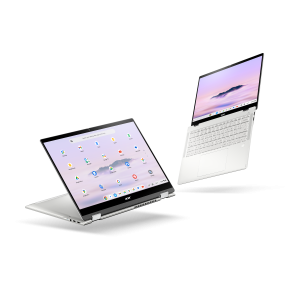Popular Keywords
- About Us
-
Research Report
Research Directory
Semiconductors
LED
Consumer Electronics
Emerging Technologies
- Selected Topics
- Membership
- Price Trends
- Press Center
- News
- Events
- Contact Us
- AI Agent
About TrendForce News
TrendForce News operates independently from our research team, curating key semiconductor and tech updates to support timely, informed decisions.
- Home
- News
[News] Huawei Hubble Invested in AI and Software Start-Ups

Recently, Huawei Hubble Investment announced investment in two innovative companies to further deepen its deployment of technological ecosystem in May, followed by a series of investments in third-generation semiconductors, EDA tools, chip design, laser equipment, and core semiconductor materials.
Invested in Spirit AI to Deploy Embodied Intelligence
Hubble Investment has recently taken a stake in Hangzhou-based company Spirit AI, acquiring a 1.4323% equity share, markimg Huawei’s first foray into the robotics field and signals an expansion of its strategic step in embodied intelligence. In addition to Hubble, Shenzhen China Merchants Innovation Investment Fund Center (Limited Partnership) also participated in this round of investment.
Founded in January 2024, Spirit AI focuses on developing general-purpose humanoid robots and next-generation embodied large models. Its core team includes elite talents from UC Berkeley, Carnegie Mellon University, Tsinghua University, and top companies such as ByteDance, Xiaomi, and Tencent.
Rooted in embodied intelligence, Spirit AI develops proprietary technologies such as the VLA (Vision-Language-Action) model and the CoPa (Component Constraint) model, which enable robots to generalize operations across different scenarios. Its humanoid robot Moz1 features 26 degrees of freedom and boasts a power density 15% higher than Tesla’s Optimus. It is scheduled to be deployed in industrial and logistics settings in 2025. Additionally, its VLA Spirit v1 is China’s first robot capable of performing long-range flexible object manipulation (such as folding clothes), with the official version soon to be released.
Hubble’s investment in Spirit AI may aim to foster technological synergy and strategic alignment. Industry insiders suggest that Spirit AI’s embodied large model technology could be deeply integrated with Huawei’s Ascend AI chips, Pangu large models, and HarmonyOS, creating a complete technological loop from foundational computing to application layers—similar in logic to Tesla’s “Optimus + Dojo” setup.
Notably, Huawei has already collaborated with companies like Leju Robots to build a three-in-one robotics ecosystem comprising operating systems, communication technologies, and artificial intelligence. Leju’s latest humanoid robot, “Kuafu,” is equipped with HarmonyOS and Pangu’s embodied intelligence model, offering all-round visual perception and all-terrain mobility.
It’s also worth noting that Huawei (Shenzhen) Global Embodied Intelligence Industry Innovation Center officially began operations in November last year. Moreover, Huawei also signed strategic cooperation agreements with over a dozen companies including Leju Robots, Han’s Robot, Topstar, Topsun, Chinasoft International, HCFA Robots, and Zhaowei.
Invested in Tongyuan Soft Control to Deploy Cyber Physical System
Hubble has also taken a strategic stake in Suzhou Tongyuan Soft Control Information Technology Co., Ltd.
Founded in 2007, Tongyuan Soft Control specializes in developing next-generation cyber physical system (CPS) modeling and simulation industrial software. Its core product, the MWORKS platform, is developed using the internationally standardized Modelica language and features what is claimed to be Asia’s only Modelica compilation and solving engine, enabling unified modeling and simulation of complex multi-domain systems across mechanics, electrical, fluid, and thermal fields.
Its self-developed Modelica solver has been certified by Germany’s Fraunhofer Institute, significantly outperforming foreign equivalents in computational efficiency, which is the first Chinese domestically developed solver to receive this certification.
The MWORKS platform plays a crucial role in chip design simulation, wireless communication R&D, semiconductor manufacturing optimization, and engineering services. For example, its tools support the design, evaluation, algorithm development, and testing of digital and analog chips—dramatically improving efficiency and ensuring continuity and technological leadership. In wireless communications, MWORKS, combined with its wireless toolkits, is used for pre-research on standards, chip algorithm development, product design, and antenna simulation—delivering significant efficiency gains and enabling fully online operations.
With the partnership with Huawei, Tongyuan Soft Control aims to integrate the high-performance scientific computing language Julia as the user interface and Huawei’s MindSpore as the backend to jointly develop a series of AI toolkits, showcasing the potential for deep technological synergy. In this collaboration, Hubble is expected to empower the company through funding, technology, and market support, accelerating innovation and market expansion in CPS modeling and simulation, and enhancing its core competitiveness.
(Photo credit: Huawei)





